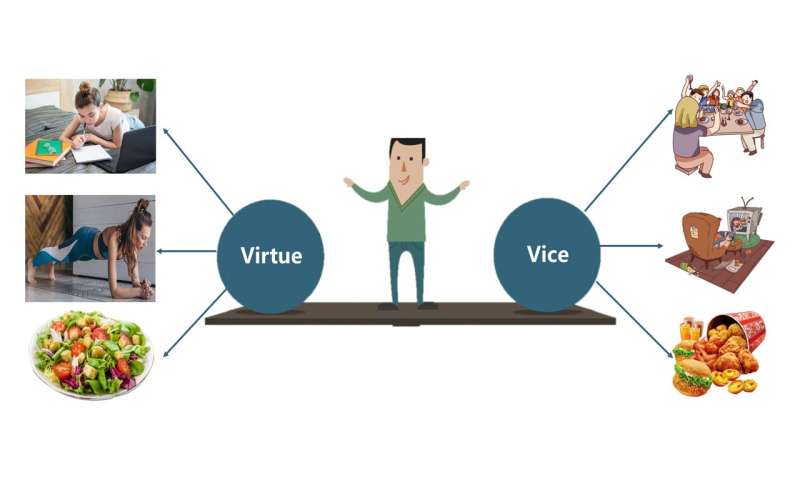Ambient coldness increases vice inclinations

We are always facing dilemmas between vices and virtues in our daily lives. For example, imagine that you will have an important examination soon, but your favorite drama has just been updated. Which one is your priority? Will ambient factors influence your decision?
Prior studies have found that ambient elements such as dim light, non-indulgent food scent, and high volume increased vice preferences. Yet, less is known about how cold temperature affects people's vice inclinations. In a recent study, we explored the effect of ambient temperature on consumer choice in the tradeoffs between vices and virtues.
People adopt an affective decision-making mode in cold ambience
Research has documented a thermoregulatory embodiment effect of ambient temperature, such that physical coldness activates people's desires to reach complementary warm states, which can be achieved through acquiring emotional warmth or physical warmth, and vice versa for physical hotness. Therefore, physical coldness leads to behaviors that increase emotional warmth. We found that when in an ambiently cold circumstance, people are more likely to adopt the affective decision-making mode to acquire emotional warmth, which helps to complement their physical coldness.
Preference towards vices in cold ambience
Prior research has found that people tend to conduct vice behaviors when dominated by an affective decision-making mode, such as preferring unhealthy foods or addictive substances like tobacco and alcohol. In our experiments, we randomly assigned participants to a relatively cold room (about 20 degrees Celsius) or a warm room (about 30 degrees Celsius). They were asked to quickly write down five things they wanted to do the next day. The answers were later coded to represent participants' inclinations toward vice behaviors. Next, participants evaluated their decision-making mode at present. Results showed participants were more likely to adopt an affective decision-making mode in the cold condition. Meanwhile, participants in the cold temperature condition came up with vice behaviors faster than those in the hot temperature condition, indicating that participants were more inclined to vice behaviors when they felt ambiently cold.
What's the lesson here?
For marketers and retailers, we suggest that reducing the inside temperature below the outside can trigger vice inclinations, which offers an easy, cheap method to increase sales for vice retailers and service providers of the leisure or entertainment industry. On the contrary, for retailers and service-providers in a vice-resisting campaign, such as healthy-positioned restaurant, a higher inside temperature might be helpful.
For educators and employers, a colder-than-average atmosphere might hamper students' and employees' academic or work performance, so it will be beneficial for work efficiency if employers and educators intentionally set the room's temperature at a higher range.
This story is part of Science X Dialog, where researchers can report findings from their published research articles. Visit this page for information about ScienceX Dialog and how to participate.
More information:
Yining Yu et al, Need to warm up! Ambient coldness increases vice inclinations, Journal of Sensory Studies (2021). DOI: 10.1111/joss.12686
I am currently a Ph.D. candidate at the Department of Data Science and Engineering Management, School of Management, Zhejiang University. My research interests include sensory marketing and neuromarketing. My works have appeared in Journal of Retailing, Psychology & Marketing and Journal of Sensory Studies.